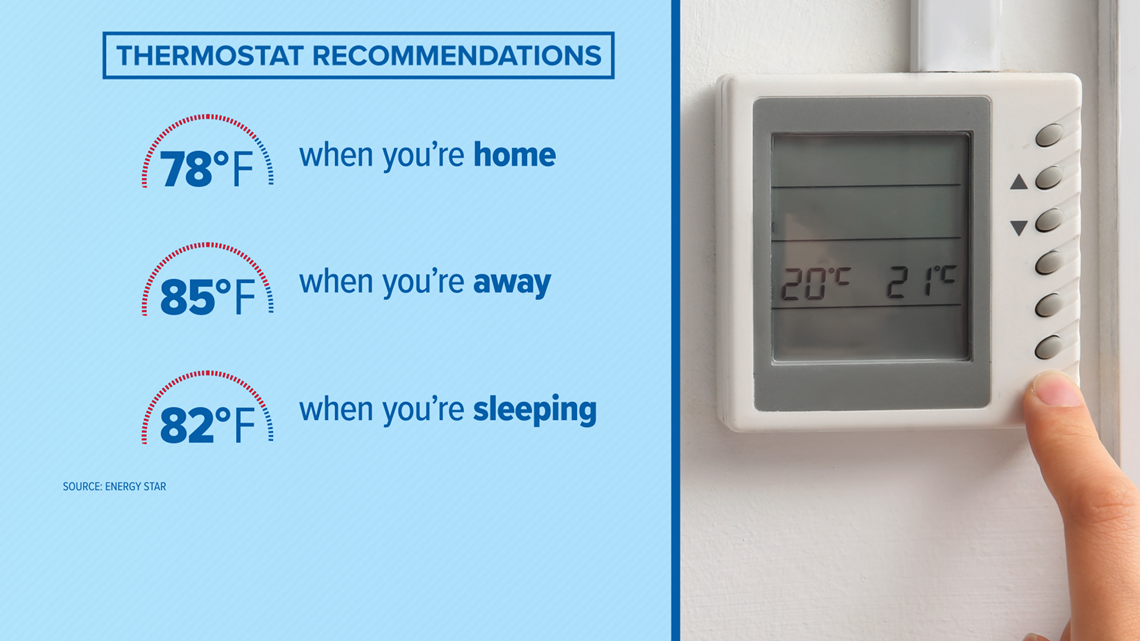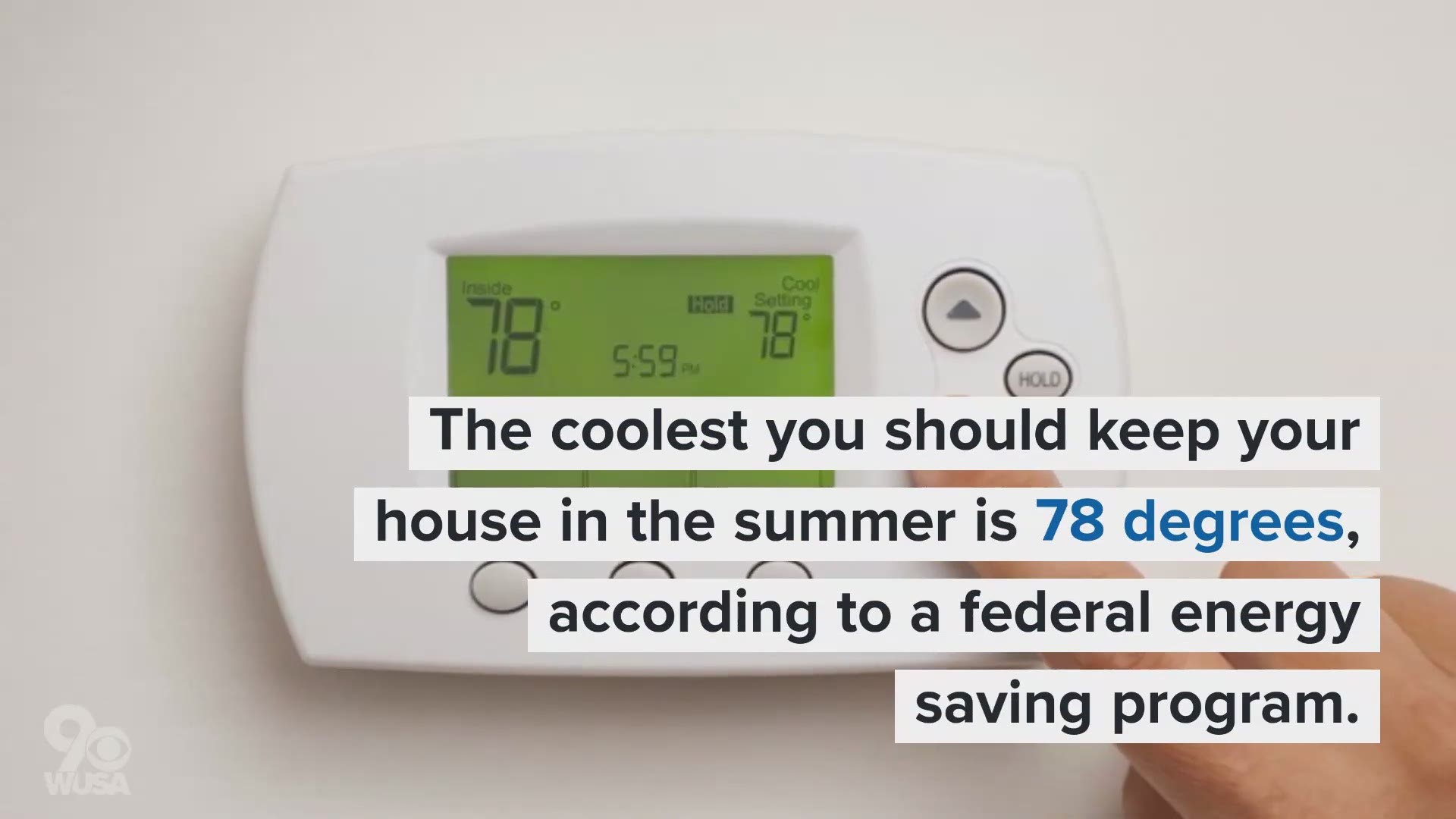WASHINGTON — The official federal government recommendation for keeping your house cool in the summer is to keep your air conditioning set at 78 degrees.
The recommendation - made as part of Energy Star, a federal program run by the Environmental Protection Agency and Department of Energy that is aimed at helping consumers make energy efficient decisions - is in the news after being referenced in a Consumer Reports story earlier this month.
When you're at work or away, the program recommends setting it at 85 degrees. When you're sleeping, the government suggests you set the thermostat at 82 degrees.


The DOE said on Aug. 22 they wanted to note those recommendations are just that, recommendations.
"In 2009, EPA produced and published an Energy Star report which included suggested thermostat temperature adjustments to achieve greater energy efficiency and cost savings," a spokesperson from the DOE said in a statement. "It is the position of DOE that Americans should set their thermostats to whatever temperature they choose. The 2009 EPA Energy Star report should simply be used as a resource for people seeking to achieve greater energy savings in their homes, should they choose to do so."
The Department of Energy released an infographic about air conditioning in the U.S. Apparently, two thirds of U.S. homes have air conditioning, and annually, it costs American homeowners around $11 billion to power those units.
Officials said using high-efficiency air conditioning units and taking other energy saving actions can reduce your energy use from between 20 to 50 percent.
Some other recommendations for reducing your summer energy bill from Energy.gov
- Avoid placing lamps or TVs near the thermostat, because it can sense the heat from the appliances, which can make the AC run longer than necessary.
- Vacuum registers regularly to remove any dust buildup
- Don't put furniture in front of your registers to block airflow
- Using a ceiling fan will allow you to raise the thermostat by about 4 degrees with "no reduction in comfort"
- Turn off ceiling fans when you leave the room - "fans cool people, not rooms, by creating a windchill effect"
- Install window coverings that let natural light in and prevent solar heat gain
Washington D.C. on average, sees 36 days of 90+ temperatures for the entire year. So far this year, D.C. has hit 90 degrees 51 times (and counting!) as of Aug. 22.
For comparison, last year we hit 90 degrees a total of 42 times.
This story has been updated with the response from the Department of Energy, sent on Aug. 22, and to update the number of 90 degree temperatures in D.C. so far in 2019.

